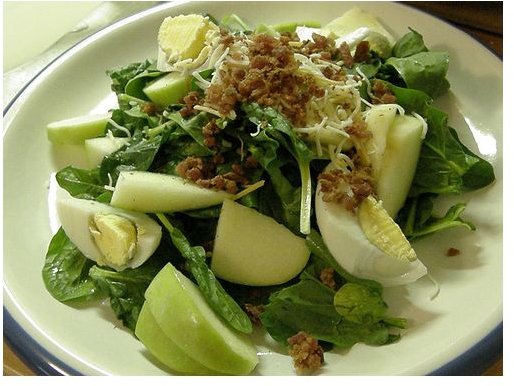Using a Healthy Meal Planning Guide and Tips for Better Eating
Benefits of Planning Meals
Cooking at home does take time and effort. With organization, it can be an extremely efficient experience. Knowing what you want at each meal can cut down on shopping time and costs. Understanding how to cook simple, nutritious meals will ensure adequate nutrition for you and your family.
Food is necessary to survive, and healthy food is necessary to thrive. Creating and following a healthy meal planning guide, and understanding nutrition tips, is a powerful step to a balanced, healthy diet. Also, it is a way to let go of expensive and unhealthy eating habits, such as eating out, or buying junk food.
Understanding the Basics of Nutrition
While nutrition and dietary advice can be complicated and overwhelming, keeping a few important factors in mind is all that is needed for foundational knowledge. First, the more natural, the better. Fresh fruits and vegetables, unprocessed meats and cheeses, and minimally processed whole grain products are far better than processed versions. Generally, less processing means not only more nutrition and less fat and sodium, but more readily absorbable nutrition. Try to buy organic produce and freshly-pressed fruit juices. Buy meat, poultry, and seafood fresh from the grocer, instead of packaged and preserved products. Look for the most natural milk, yogurt, and cheese products — dairy that is not made with the use of hormones or antibiotics. Look for brown rice, real oats instead of instant, and whole grain breads and pastas, grains which have not lost most of their incredible nutritional content through processing.
Second, create balance. A healthy diet includes adequate protein, carbohydrates, and fat, as well as a variety of sources of vitamins and minerals. Make everything you and your family eat, matter. Plan for balance between protein sources, carbohydrates, beneficial fats, and fruits and vegetables, throughout the day. This is not as hard as it may seem when using healthy ingredients. Homemade soup could have all the vegetables you need for the day. Whole grains are a good source of not only essential vitamins and minerals, but also essential fatty acids and amino acids. Use extra virgin olive oil for cooking to get plenty of healthy unsaturated fatty acids, and allow a small amount of butter once in awhile.
Third, keep necessary nutrients in mind. Many people are deficient in some, if not all vitamins and minerals. Calcium is so important for healthy bones and teeth, cardiovascular health, and a properly functioning nervous system. In order to get enough calcium, you do have to consume at least three servings in a day. Dairy products, dates, dark leafy greens, almonds, sesame seeds, and tofu are all excellent sources of this mineral. Iron is another extremely important mineral, important for proper growth, and for oxygen-rich blood. Meat, fish, poultry, whole grains, green leafy vegetables, many beans, and dried fruit are all good sources. Magnesium is essential for hundreds of bodily functions, it balances with calcium, is needed for nerve and muscle health, strong bones, and to prevent the calcification of tissue. Magnesium is found in many fruits and vegetables, yogurt, nuts, and beans. All the essential nutrients from vitamin K to potassium are needed in adequate quantities. A healthy, balanced diet will provide them without effort through natural proteins, fruits, vegetables, legumes, and grains.
Sample Two-Day Healthy Meal Plan
Day one:
- For breakfast, two soft-boiled eggs, sliced avocado, whole wheat or rye toast with one teaspoon butter, and a six-ounce glass of tomato juice or vegetable juice.
- For lunch, a cup of low-fat yogurt with sliced bananas and strawberries, and chopped walnuts.
- For dinner, chicken breast, pan-roasted in olive oil and seasonings, steamed brown rice, and sauteed red peppers and collard greens. Sprinkle with one ounce of shredded cheese if desired. (Save two or three ounces of chicken breast for following day)
- Snack throughout the day on fresh fruit and almonds.
Day two:
- For breakfast, oatmeal with brown sugar, raisins, and milk, and a glass of orange juice.
- For lunch, a salad with dark salad greens, carrots, tomatoes, and avocado, dressed with a homemade dressing, made from a nutritional oil as a base, such as flax seed or hemp seed. Add any leftover cooked chicken breast from the night before.
- For dinner, steamed squash and zucchini, cooked in a little butter and chicken broth, roasted salmon, and whole wheat pasta.
- Drink a cup of warm milk and honey before going to bed.
Useful Tips
Make following a healthy meal planning guide and using nutrition tips, something positive, instead of another task. Use accessible online resources for recipe ideas and nutrition information, such as Meals Matter, and World’s Healthiest Foods. Over time, expand your knowledge on diet and nutrition through reading books and magazines. Spend an hour at the beginning of the week developing recipes, and a healthy shopping list. It will save so much time during the week. Also, no extra money will have to be spent on fast food or packaged products, because everything is planned for. Enjoy trying new foods and experimenting with different dishes. Talk to your family about healthy meals that they may be willing to try. Most importantly of all, enjoy your food, and enjoy your health.
Resources
Balch, Phyllis, CNC. “Prescription for Nutritional Healing, 4th Edition.” (The Penguin Group, 2006).
Healthy Shopping List (Meals Matter) https://www.mealsmatter.org/MealPlanning/Shopping/
“Tips for Healthy Meal Planning” (Worlds Healthiest Foods) https://www.whfoods.com/genpage.php?tname=whfkitqa&dbid=54
Photo Credit
photo by: Dan4th (CC/flickr) https://www.flickr.com/photos/dan4th/2417204473/
